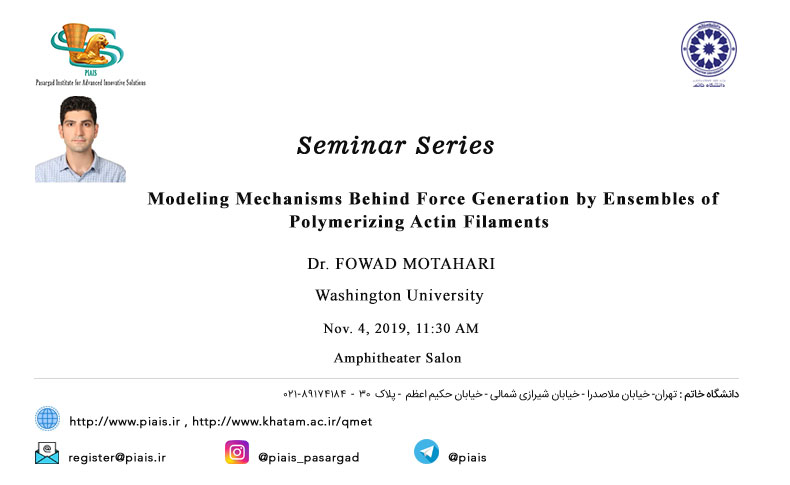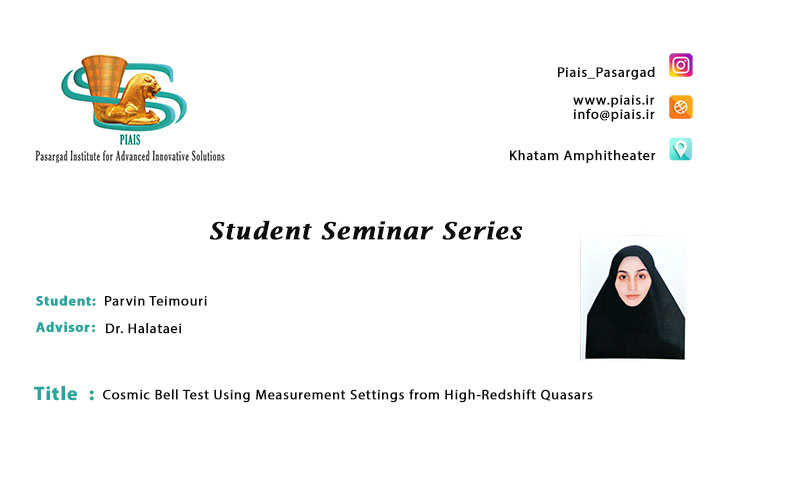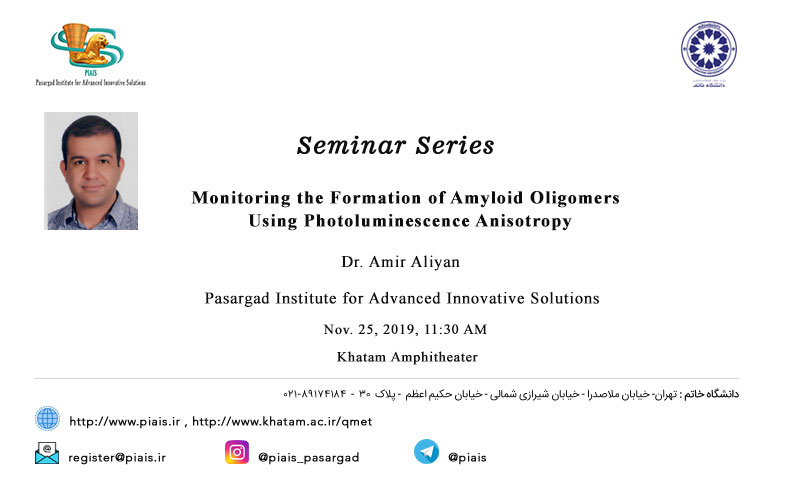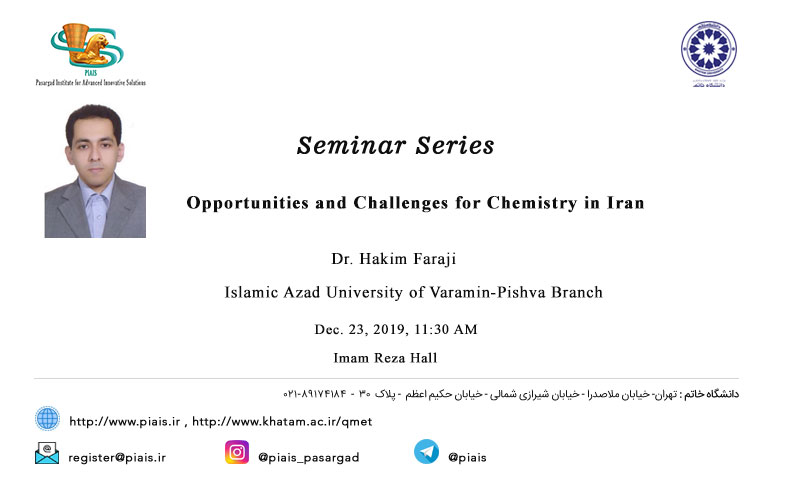
Modeling Mechanisms Behind Force Generation by Ensembles of Polymerizing Actin Filaments
Actin polymerization is the primary mechanism for overcoming the large turgor pressure that opposes endocytosis in yeast. While generation of pushing forces by actin polymerization is fairly well understood,, the free filament on- and off-rates, the numbers of fast- and slow-growing filaments,it is not clear how actin polymerization produces pulling forces. In order to understand this process, it is necessary to simulate polymerization of filaments having various types of interactions with the membrane. Since existing methodologies in the literature do not treat such problems correctly, we develop a thermodynamically consistent methodology for treating polymerization of filaments having arbitrary interaction potentials with the membrane. I perform stochastic simulations for a system of 144 semi-flexible actin filaments in a square array, treating all subunits explicitly. Each filament interacts with the membrane via an interaction potential that has both attractive and repulsive components. The crucial protein Sla2, which binds actin filaments to the membrane, is assumed to slow the growth of the filaments near the array center by having a strongly attractive potential. The (de)polymerization rates are potential-dependent and thus vary with the filament-membrane gap. We model the elasticity of the actin network by linear springs connecting adjacent filaments to each other. The simulation results show that the outer filaments push on the membrane, while the inner filaments pull on it. I calculate the force distribution for various model parameters, including the potential depthsand the network rigidity. Under the most favorable conditions, the total pulling force is the sum of the stall forces of all the pushing filaments. The filament-membrane detachment occurs for softer gels with weaker central bindings, and it propagates like a crack in brittle regime. The steady-state force distributions are flat over the pulling and pushing regions, indicating the uniform polymerization rates across the pulling and pushing regions after reaching steady-state.
Relations Post

2020, January, 20
Cosmic Bell Test Using Measure...
In 1964 John Stewart Bell presented an inequality that was able to test the validity of quantum mechanics against local realist models. The inequality states that any theory that satisfies...
Learn More
2020, January, 07
Monitoring the Formation of Am...
The formation of oligomeric soluble aggregates is related to the toxicity of amyloid peptides and proteins. In this manuscript, we report the use of a ruthenium polypyridyl complex ([Ru(bpy)2(dpqp)]2+) to...
Learn More
2020, January, 07
Opportunities and Challenges f...
Due to the importance of chemistry in different industries, protecting the environment, preventing the destruction of natural resources, and creating a healthy and natural life have emerged as important components...
Learn More